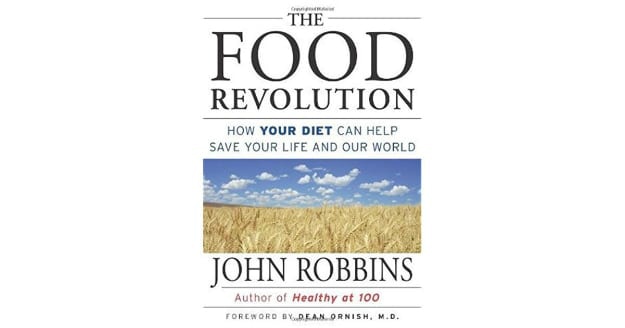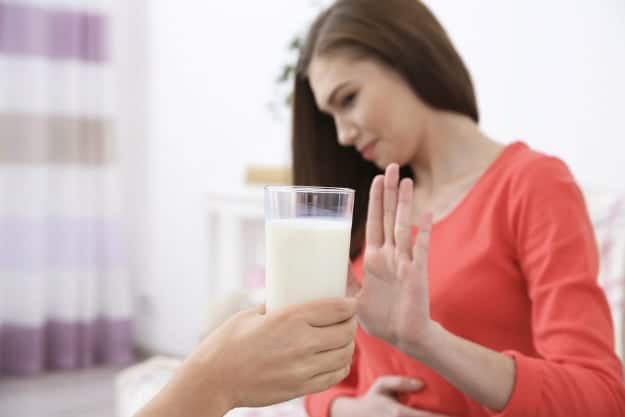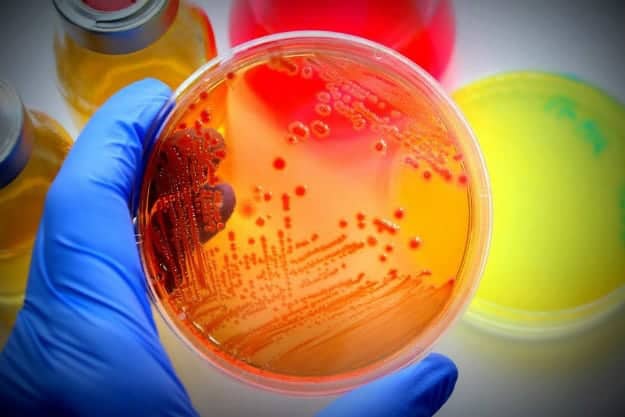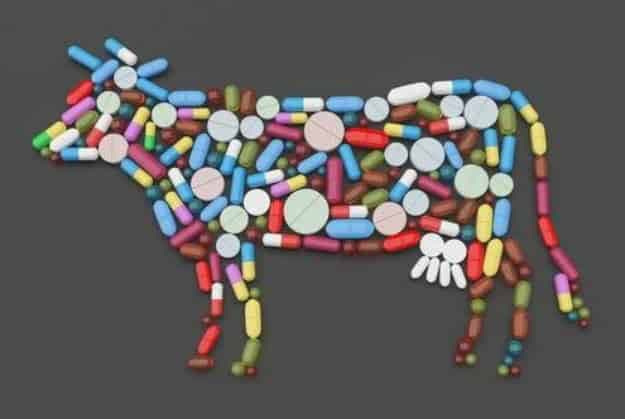A Review Of John Robbins’ Epic Work, The Food Revolution
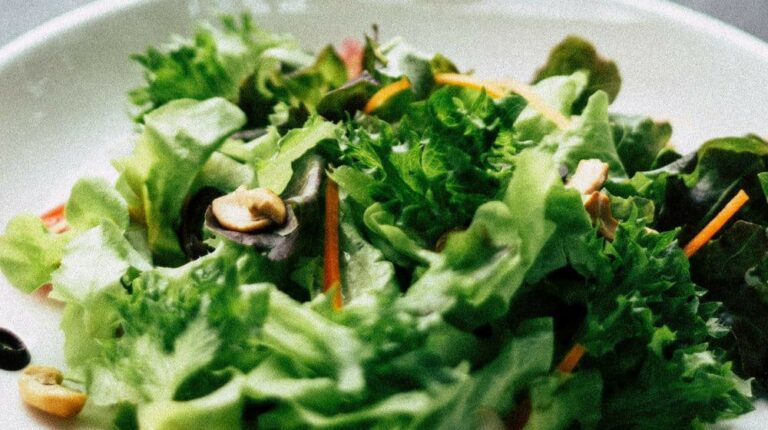
The work of John Robbins is legendary.
He’s the guy who turned down his birthright, running the billion-dollar Baskin Robbins Company.
His father and uncle were the founders. His uncle died prematurely of heart disease, and his father was diagnosed with diabetes. And, John was the only son, groomed to become CEO. To know more about John Robbins’ books, keep reading!
A Look into John Robbins’ The Food Revolution
In this article:
- How Robbins’ Books Helped Me and My Children
- The Food Revolution as a Slam Dunk Aggregation of Diet Studies
- John Robbins’ Short Biography
- Topic Overview
- Are Dairy Products Good for Us?
- Do Meat Products Cause Cancer?
- Is a Plant-Based Diet Superior?
- How Much Protein Do We Need?
- Where Does the Food-Borne Illness Come From?
- Are Livestock Fed Hormones and Antibiotics?
- How Is World Hunger Affected by Meat and Dairy Consumption?
- Conclusions
How Robbins’ Books Helped Me and My Children
His books The Food Revolution and Diet for A New America were pivotal in turning my own diet and lifestyle around and saving two of my children from the health problems they were born with.
I got sick and fat in my 20s, and like most bad things, it happened slowly, until I finally had to face that maybe my diet has something to do with my misery.
But, when I got serious about turning it all around, most of what I read had little credible evidence behind it. I love science, and I love empirical evidence. John Robbins’ work was a breath of fresh air and resonated with me deeply.
Partly, that’s because he wasn’t influenced by industry and wasn’t promoting the next fad diet. He said no to his trust fund because he didn’t like where the dollars came from: from an industry making America sick.
The Food Revolution as a Slam Dunk Aggregation of Diet Studies
This post shares some of the best nuggets from The Food Revolution. Robbins quotes 60+ sources in every chapter.
Where Campbell’s The China Study is the “grand prix” of nutrition and epidemiology, Robbins’ work is the “slam dunk” aggregation of all the studies showing that a high plant-based diet is the foundation of good health.
Robbins’ food revolution is a deeply compassionate “voice” for both the health of people and humane treatment of animals. While I won’t quote his sources, as you can find all of that in his references, I think you’ll find the data astonishing.
John Robbins’ Short Biography
John Robbins and his two sisters grew up with an ice cream cone-shaped swimming pool. Their cats were named after the 31 flavors, and they often had ice cream for breakfast, lunch, and snacks. For many years, he and his wife lived on less than $1,000/year, very happily, in a cabin in the woods.
I think John Robbins is a great American hero, and his outstanding books are worth owning and reading.
Topic Overview
I’ll start with some stats about whether dairy products contribute to your health. Next, we’ll discuss data about how meat eating affects health and how much protein we really need.
We’ll discuss what the surprising main culprits of foodborne illness are and how vegetarians’ health compares to meat eaters.
I’ll also cover how eating “high on the food chain” affects world hunger and the environment.
I'm not referencing his sources because you can do that, picking up a copy of The Food Revolution.
Are Dairy Products Good for Us?
Asians have little or no osteoporosis. They also, until recently, have been non-consumers of dairy products. (Besides eating much less meat and almost no dairy products, most Asians also drink few sodas, get lots of exercises, and eat more vegetables.)
The huge Framingham study, commissioned by Congress in 1948, has tracked over 5,209 subjects in the town of Framingham, Massachusetts. It is funded by The National Heart, Lung and Blood Institute and Boston University and is now tracking a third generation.
One of its statistically significant findings was that women with the highest dairy consumption had substantially more bone fractures than women who drank less milk.
The highest dairy-consuming countries are Finland, Sweden, the U.S., and England. The countries with the highest rates of osteoporosis are Finland, Sweden, the U.S., and England.
Black South Africans consume only one-tenth the amount of calcium that African Americans (on this continent, eating the Standard American Diet) do. But, African Americans on our continent have 9 times as many hip fractures as their African counterparts!
Researchers studying diet and hip fractures in 33 countries found what Robbins calls this “absolutely phenomenal correlation”: the more plant foods people eat (primarily fruits and vegetables), the stronger their bones and the fewer fractures they experience.
The more animal foods people eat, on the other hand, the weaker their bones and the more broken bones they experience.
The following are calcium absorption rates, according to the American Journal of Clinical Nutrition:
Brussels sprouts 64%
Mustard greens 58%
Broccoli 53%
Turnip greens 52%
Kale 50%
Cow’s milk 32%
Suzanne Havala is a fellow of the American Dietetic Association (ADA) and says this:
“Milk is species specific. Each species’ milk is tailor-made for its own kind. So how on Earth did people start drinking milk from cows? Even adult cows don’t drink cow’s milk. And if we drink cow’s milk, why stop there? Why not drink dog’s milk? Or bear’s milk?”
Neal Barnard, M.D., is president emeritus of the Physicians Committee for Responsible Medicine. He said this:
“The dairy industry continues to whitewash the dangers of cow’s milk. The ubiquitous ‘milk mustache’ campaign makes misleading claims about milk preventing osteoporosis, lowering blood pressure, and enhancing sports performance. Recent studies, including the Harvard Nurses’ Health Study, have shown that milk offers no protection against broken bones. And, unlike prescription drug ads, the mustache ads don’t reveal the many unwanted side-effects of milk. Among these are increased risk of prostate and ovarian cancer, diabetes, obesity, and heart disease.”
Our obsession with eating massive amounts of calcium is unwarranted, and we shouldn’t look to dairy products to get calcium. We just need to eat bioavailable sources of calcium. These foods high in bioavailable calcium include greens, nuts, seeds, and grains.
Do Meat Products Cause Cancer?
Colon cancer is 250% higher in women who consume red meat regularly than those who eat the meat less than once a month. It's 38%higher for those who eat it once per week than women who abstain.
For poultry, people who consume it once per week is 55% higher than those who abstain. For those who eat it four times per week, it's 200 to 300% higher than those who abstain.
For beans, peas, and lentils, the risk of colon cancer for those who consume them twice a week is 50% lower than those who don't eat them.
People who often eat orange, green, and yellow vegetables have 20 to 60% lower risk of lung cancer. People who consume a lot of grapes, bananas, and apples have 40% less risk of lung cancer.
The rate of lung cancer in British vegetarian men, compared to the general British population, was 27% lower.
Dr. Diane Courtney, former head of the EPA’s Toxic Effect Branch, told Congress, “Dioxin is by far the most toxic chemical known to mankind.” And, the EPA says that up to 95% of human dioxin exposure comes from red meat, fish, and dairy products.
The American Institute for Cancer Research and the World Cancer Research Fund analyzed more than 4,500 studies and said that 60 to 70% of all cancers can be prevented by staying physically active, not smoking, and adhering to the following diet:
“Choose predominantly plant-based diets rich in a variety of vegetables and fruits, legumes, and minimally processed starchy staple foods.”
Is a Plant-Based Diet Superior?
According to the Journal of the American Dietetic Association (this research was published in other journals as well), the average IQ of U.S. children is 99, and the average IQ of vegetarian US children is 116.
The obesity rate among the general population, at the time The Food Revolution was published, was 18% (it is higher now), but it was only 2% among vegetarians.
And, while 25% of U.S. children were overweight, only 8% of U.S. vegetarian children were overweight.
Only 1% of U.S. children eat the USDA recommended servings of fruits, vegetables, and whole grains, but 50% of U.S. vegan children eat the recommended servings.
The average blood pressure of non-vegetarians is 121/77, but the average vegetarian’s blood pressure is 112/69. (Compare this to the “ideal” blood pressure of 110/70.)
The incidence of high blood pressure in meat eaters compared to vegetarians is almost triple. And, the incidence of very high blood pressure in meat eaters compared to vegetarians is 13 times higher.
More than 50% of American senior citizens have high blood pressure. Yet, the incidence of high blood pressure among senior citizens in countries eating plant-based diets is virtually zero.
The average U.S. cholesterol level is 210, but among vegetarians, the average is 133.
The Harvard Nurses’ study, 35 years into it (it’s now over 40 years old, with 280,000 participants), didn’t see a single-study participant have a heart attack with cholesterol under 150.
How Much Protein Do We Need?
Are plant sources of protein sufficient?
The protein in a mother’s breast milk is only 5% of its calories. And, the minimum protein requirement, according to the World Health Organization, is 5% of calories. Even the U.S. RDA for adult protein intake is 10% of calories.
Most Americans are eating 20% protein, most of it from animal sources . Those eating low-carb diets are often eating as high as 60% protein.
It may surprise you to learn, since some of our food industries have co-opted the idea of “protein” being synonymous with “animal flesh,” that protein in broccoli and spinach is more than 40% of calories.
The low-carb advocates such as Dr. Atkins, Dr. Sears (The Zone), and others recommend 30% of your calories or more, coming from animal proteins.
Organizations that have condemned high-protein, low-carb diets include the World Health Organization, American Heart Association, American Cancer Society, American Dietetic Association, Surgeon General of the U.S., and the American Institute for Cancer Research.
These are two quotes by Barry Sears, who authored The Zone Diet, as examples of how America’s obsession with protein deviates from the actual evidence:
“Humankind has been genetically unable to cope with ... grains.”
“About one-third of Americans are ... suffering from protein malnutrition.”
Most of the human race, for thousands of years, has relied on, for most of its caloric energy, whole grains.
The American Dietetic Association has said, “Plant sources of protein alone can provide adequate amounts of the essential and nonessential amino acids.”
While grains were ground by mortar and pestle, as early as 3.4 million years ago, 98% of the wheat eaten in the U.S. are in the form of white flour—with the bran and germ, where all the fiber and micronutrients are, are removed. Only 2% is eaten as whole grains!
Grains are good for you, but not how you’re probably eating them. [For a deeper dive on this topic, check out the blog post I wrote about grains, which are highly controversial these days.]
In many traditional diets, 75-80% of total dietary energy comes from whole grains.
U.S. children who eat the recommended levels of fruits, veggies, and grains are only 1%. And, Americans who are aware that eating less meat reduces colon cancer risk are only 2%! American men who are aware of the link between eating animal products and prostate cancer is only 2%.
Where Does the Food-Borne Illness Come From?
The deadly E. coli bacteria have occasionally been found in sprouts and raw apple juice. This tends to be what all Americans know about it due to media coverage. However, the vast majority of E. coli has been found in ground beef.
Tom Billy, the administrator of USDA’s Food Safety and Inspection Service, estimated that 50% of U.S. beef carcasses contain E. coli.
Reuters News Service said that “... a report by the U.S. Dept. of Agriculture estimates that 89% of U.S. beef ground into patties contains traces of the deadly E. coli strain.”
The leading cause of kidney failure in U.S. and Canadian children is hemolytic uremic syndrome, and 85% of the cases were caused by E. coli.
William Keene, an epidemiologist, estimated that only 2% of E. coli cases are actually reported.
Salmonella has been reported in tomatoes, greens, sprouts, and melons. Far more cases, however, have been caused by eggs and animal products. More than 650,000 Americans are sickened by Salmonella-tainted eggs in the U.S., annually, and 600 die.
The U.S. has 200 times more reported Salmonella cases than Sweden, per capita, which will make sense when you read the section, below, about how our animals are raised and processed.
Campylobacter is occasionally detected in vegetables. It’s widespread, however, in chickens and turkeys.
Over 90% of American turkeys are sufficiently contaminated with Campylobacter to cause illness. University of Wisconsin researchers screened hens for Campylobacter and found 2,300 infected, and only 8 that were not infected.
Milwaukee’s famous cryptosporidium outbreak in 1993 sickened 400,000 and killed over 100. The source? Dairy manure.
Campylobacter kills more Americans every year than E. coli and is increasing more rapidly, according to CDC numbers. The poultry industry does not dispute that most chicken sold in the U.S. is contaminated.
Former USDA microbiologist Gerald Kuester said this, of today’s processed chicken: “(The) final product is no different than if you stuck it in the toilet and ate it.”
The University of Arizona found higher levels of coliform bacteria in the American kitchen than on the toilet rim because, as Nicols Fox, foodborne disease authority said, there’s “a bonus on the animal foods people bring into their kitchens. The bathroom is cleaner because people are not washing their chickens in the toilet.”
Listeria is another deadly food-borne bacteria and has been found on cabbage grown in fields fertilized with Listeria-infected animals. Far more often, however, it’s found in soft cheeses and processed meats.
The U.S. government’s answer to microbial contamination is irradiation. No long-term studies have been done about the health effects of this technique. While economies of scale have led us to this point, with supply chains that serve billions of people in the modern age, the issue of irradiation and other issues like it highlights that any time we can grow our food, or source it locally, with less processing, the lower the risk to our health.
We do know that the destruction of vitamins A, B, C, K, and E is a consequence of irradiation, and new and potentially carcinogenic chemical compounds are created, potentially also creating mutant bacteria and viruses.
Are Livestock Fed Hormones and Antibiotics?
John Robbins’ book has a fascinating discussion on hormones and antibiotics in our meat supply, as well as interesting data on mad cow disease.
Over 90% of U.S. beef cattle receive hormone implants—and in larger feedlots, it’s 100%.
An independent European Union scientists’ report said, regarding the effect of hormones added to U.S. beef, that they are “complete carcinogens,” which means they are able to cause and promote cancer by themselves.
American doctors administer 3 million pounds of antibiotics for treating infectious disease. To put that in context, antibiotics administered to livestock in the U.S., annually, for purposes other than treating a disease, are 24.6 million pounds. (Remember that those antibiotics are then concentrated in the organs and flesh of the livestock.)
Denmark banned the use of routine use of antibiotics, and prior to the ban, the prevalence of antibiotic-resistant bacteria in chickens in Denmark was 82%. Three years after the ban, only 12% of chickens tested positive for antibiotic-resistant bacteria.
There are no known adverse health effects as a result of Denmark’s elimination of antibiotic use (for purposes other than treating a disease).
Creutzfeldt-Jakob disease, known as “mad cow disease,” is caused by feeding cows their own meat and bones. Feeding pigs and chickens their own bones, brains, meat scraps, feathers, and feces is still legal and commonplace in the U.S.
A Yale study examining brains of Alzheimer's brains, post-mortem, found that 13% of them actually had CJD. Four million Americans, at the time of John Robbins’ publication, were diagnosed with Alzheimer’s disease.
How Is World Hunger Affected by Meat and Dairy Consumption?
John Robbins’ book reports that 1.2 billion human beings are underfed, or malnourished, in the world. Ironically, the number of overfed and malnourished people in the world is also 1.2 billion.
Both groups have high levels of sickness, disability, and shortened life expectancies. The weight of the world’s cattle, compared to the weight of the world’s people, is nearly double.
The area of Earth’s total land mass used as pasture for cattle/livestock is 50%. Grassland needed to support one cow, under optimal conditions, is 2.5 acres.
To produce 1 lb. of beef, 17 pounds of grain are required. Only 2% of corn grown in the U.S. is eaten by people, and 77% of it is eaten by livestock for meat production.
U.S. farmland producing vegetables is only 4 million acres, whereas 56 million acres are used for growing hay to feed livestock.
70% of U.S. grain and cereals is fed to livestock, but 1.4 billion people could eat if that grain were fed to humans.
Only 4% of the world’s population lives in the U.S., but Americans eat 23% of the world’s beef.
Now, let’s look at how many people could be fed if the 2.5 acres that raise one cow goes to feeding people instead:
Cabbage 23 people
Potatoes 22 people
Rice 19 people
Corn 17 people
Wheat 15 people
Chicken 2 people
Milk 2 people
Eggs 1 person
Beef 1 person
The amount of grain needed to adequately feed every person on the planet who dies of hunger annually is 12 million tons. And, if Americans reduced their beef consumption by even 10%, it would save 12 million tons of grain.
The amount of the world’s fish catch that is fed to livestock is 50%, which is more than the combined weight of the U.S. human population.
These are some additional statistics John Robbins cites about how eating lots of animal products contributes to environmental damage:
The Exxon-Valdez disaster spilled 12 million tons of oil into the Gulf.
When a hog excrement dam broke in North Carolina, in 1995, 25 million tons of putrefying hog urine and feces spilled.
Between 10 and 14 million fish were killed, as an immediate result. Half of all East Coast fish species were decimated by this disaster.
Are farmed fish the answer to avoid overfishing? Farmed fish contains much higher levels of heavy metals, pollutants, and pesticides, including 10 times more PCBs, according to a 2001 study.
The concentration of pathogens in hog waste (deemed a biohazard) is 10 to 100 times greater than human waste.
For every household in the country, 20 tons of livestock manure are produced annually, and dairy farms are the single largest source of water pollution, as their pollutants cauterize waterways and kill fish.
Grass-fed beef grown in the rainforest destroys 20-30 plant species, 100 insect species, and dozens of bird, mammal, and reptile species.
If Indonesians started eating as much beef, per capita, as the U.S. does, 280 million acres of Indonesian forests would be cleared (for raising cattle) in 3.5 years. The entire Costa Rican rainforests would be cleared, in 1 year, if the population began eating beef at the rate Americans do.
If no government subsidies were involved, the real cost of a hamburger would be $20.
Conclusions
I hope you’ve been enlightened by some of the statistics and facts presented in John Robbins’ The Food Revolution that impressed me, 20 years ago, to dramatically curtail the animal products and the food choices I eat and serve to my family.
I stopped eating beef and pork, “cold turkey,” after reading his book. In the past 20 years, the times I ate poultry are rare, and I do eat wild-caught fish a few times a month. (John Robbins, now a friend of mine, in his 70’s and doing more pull-ups than most men in their teens can do, told me recently that he also now eats fish occasionally.)
As I undertook this journey, to a plant-based diet, I lost 50 pounds and eliminated my prescription medications and 21 different diagnosed diseases.
Michael Greger, M.D., published How Not to Die, in 2015, is another comprehensive review of the impact eating plants versus eating animals on our health. I highly recommend it as well.
My daughter Emma, a college senior, read the book Chew On This! by Eric Schlossinger, when she was 11. (I ran a summer reading-points chart, with rewards, if my kids read a certain number of pages appropriate for their ages. I gave them double points if they read a book I chose. I recommended this book to her, she earned her double points, and she has been following a vegan diet ever since.)
The book is written for teens. It exposes the ethical, environmental, and health implications of not only eating meat but also of eating fast food. Emma highly recommends it!
These books cover the impact of over-eating animal products. However, they don't cover the impact of eating processed foods, such as white flour, sugar, and chemical additives. It should be noted that these are a problem in the Standard American Diet every bit as significant.
While most of the currently reigning fad diets address this problem, most refuse to examine the impact of eating so many animal products on our health and on the health of our planet.
John Robbins’ work is a thorough examination of the effects of my micro-choices, and yours, on the health of the planet and whether we can sustain this level of consumption for our children and grandchildren.
Next: Listen to my recent podcast with John Robbins to hear more about his story and mission.
What are your thoughts on The Food Revolution of John Robbins? Share them in the comments section!
Up Next: Low Libido and Nutrition: 10 Health Hacks For A Better Sex Drive

Disclosure: This post may contain affiliate links that help support the GSG mission without costing you extra. I recommend only companies and products that I use myself.
Editor’s Note - This post was originally published on January 25, 2018, and has been updated for quality and relevancy.
Posted in: 12 Steps To Whole Food, Reviews, Tools & Products, Vibe Podcast, Whole Food


